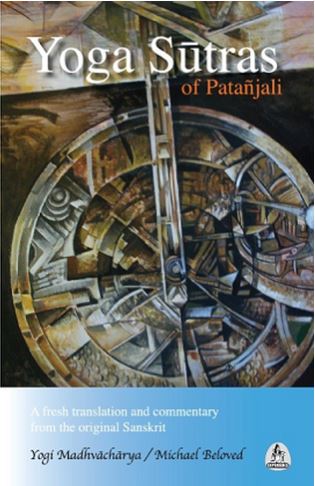
Before I came across a really well translated commentary on Patanjali’s Yoga Sutras, (after years of getting nowhere with Satchidanada’s version) even the profoundly important second verse didn’t have a lot of impact since I did not know how to separate myself from the mind.
I didn’t really know who I was separating the mind from.
Maybe this a problem for others too, whether they know it or not, when it comes to applying Patanjali’s most important verse.
The second verse in the first chapter of Patanjali Yoga Sutras Michael Beloved’s translation says:
“Yogah Chittavrtti Nirodhah” - which in English means:
“The skill of yoga is demonstrated by the conscious non-operation of the vibrational modes of the mento-emotional energy.”
The problem is (and maybe part of the reason these Sutras are neglected by yoga culture at large) that I could not truly understand verse two until I studied a proper translation and commentary on the verse and started meditating seriously, daily, routinely, abandoning visualization. I had to sense out serious ways of performing internal mystic actions that separated me from the influence of the mind surrounding me on all sides.
I think of these actions as “separation yoga” The word for this separation Yoga in Sanskrit is kaivalyam.
I find that the only time I spiritually feel somebody, like the so called atma, like the so called core self, like some centralized unit of existence, is when I truly experienced the reality that
I am not the mind or anything stored in it.
The mind is a separate devise, it is and contains the ‘chittavrtti’, the mental and emotional fluctuations.
Yet I am seated in the center of it as if someone put me in the center of a radio and now I have to sit there, hearing and seeing the world through it.
But if we are to practice Yoga, Patanjali Yoga, we find internal ways to separate from the surrounding devise – and this is what the second sutra is and further, what samayama is (Patanjali’s steps 6, 7, & 8) - the sequential practice of separation.
However, if one does not believe in the self, if one believes in non-individuality, then there is no one to be conscious of anything in this non-operation operation and Patanjali’s instructions are useless, especially when you consider the very exciting next verse, verse three, which states.
“tada drastuh svarupe avasthanam”
“Then the perceiver is situated in his own form."
'Drastuh' is the perceiver and 'svarupe' is what the perceiver is when situated (avasthanam) in his own form!!!
During Patanjali meditation, it is important to abandon thoughts. Sometimes I am literally in there saying 'no' to whatever thought attempts to gain control of the core-self's stable consciousness. It's so fragile. When the core-self is at the beginning of this difficult practice, sometimes all it has is the capacity to squeeze out a firm, NO! - each and every time a thought approaches.
It's a start and we have to start somewhere.
Jai Shri Patanjali, thank you for leaving us a map out.



Comments powered by CComment